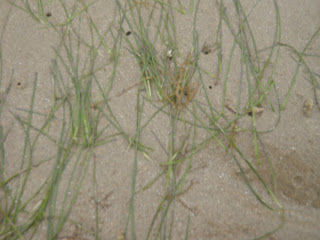Our second education programme in Zoo Negara for the year and I was impressed with the effort put in. Once again we had Edwina as our facilitator.
She started by asking a series of questions:
- Why were we at the zoo
- What are reptiles
- Name a few reptiles
- What are cold blooded and warm blooded animals
- What happens when cold blooded animals get too cold or too warm
Most of the questions were answered by the 6 to 8 year olds.

First activity of the day, tying your shoelaces without using your thumbs.
Not a single one of the kids had shoes with shoelaces.
Fai took off his sandles (with velcro straps) and slid his feet back in without using any fingers.
It was to illustrate the adaptabilty of humans and how having an opposable thumb enables us to do the simplest task.
She told the group that humans have adapted very well to its surroundings. Reptiles on the other hand being cold blooded had a harder time adapting to its environment. Its body temperature depends on its surroundings.
Edwina asked "What happens when a reptile gets too hot?"
En,7, replied "Well, when it gets too hot, it will go to a cool place"
Edwina "What about when it is too cold"
Fai " It will go out to the rock"

We walked to the reptilian section. Edwina gave an overview on all the reptiles that we walked past.

Edwina: How does a snake eat its much bigger prey?
En(while doing chewing movements with her fingers): It takes small bites
Fai: Ummm..(thinking and twiddling his thumbs)....

The group found the dead mice floating in the pythons' enclosure interesting

The dead mice being scooped up.
Mr Hafiz, the curator for the Amphibian and Reptilian exhibits, was around to answer our questions. He was a storehouse of information and was very willing to share his knowledge with us.
He said that the dead mice were killed by the pythons in the glass enclosure. They had killed the mice out of the thrill of of the hunt and could have also been a way to exercise their constrictor muscles. The snakes will not eat the mice once its body gets cold.
I asked if it was possible to limit the number of live mice put in. Hafiz said that if there isn't an excess number of mice, the bigger snakes might hunt and eat the smaller snakes. It had happened before but luckily the curator could intervene and managed to rescue the smaller snake.

Sniff like a snake activity.
Han said it smells like fondant.

Han took a tortoise egg from the display table and tried to crack it open by knocking it against the table. I stopped him in the nick of time. Phew!
JY and Thea was concerned about the life that might be growing inside the eggs. They said that they could feel the egg's contents. They asked why the kids were allowed to handle and shake the eggs.
Edwina explained that the eggs were not fertilised successfully and there wasn't any life within.

Snakes' skeletons draped on a tree branch.

Worksheet activity.
Match the eggs to the correct reptilian mother.

Petting a snake.
Ean couldn't keep his eyes off the python and insisted on giving it a pat.
Han inspecting the Star Tortoise's shell.
Han: " Look there is a bone in there! Why only one bone?"
Edwina who was next to him had to explain that the tortoise died and had to be removed, so only its shell is left.
He wasn't satisfied with the answer and kept asking for the missing bones.

The kids were provided with poster paint, paper and rocks for an arts and crafts session. They were encouraged to paint a reptile in its natural habitat.

Listening intently as Edwina pointed out the difference between a crocodile, an alligator and a false gharial.

Hafiz fed the Aldabra Giant Tortoise as the kids circled around the 60 year old tortoise and patted its shell.

So I quizzed Hafiz, who thinks that pythons make the best pets, on the snake's eating and breeding habits.
He had all the facts at his fingertips.
Interesting fact 1: Small snakes need to be fed once in 1 or 2 weeks. Larger snakes can go without food for up to a year. After they feed, they will shed their skin.
Breed your own white mice if you intend to keep snakes.
Interesting fact 2: We should only play with the snake after it sheds its skin.
Interesting fact 3: Keep snakes away from each other. They are cannibalistic.
Interesting fact 4: Snakes will eat house lizards

Aldabra Giant tortoise's poo. Looks like a clump of dried leaves and is odourless. We might take part in the
poo art programme next. Making paper out of animal poo seems interesting :)
























































